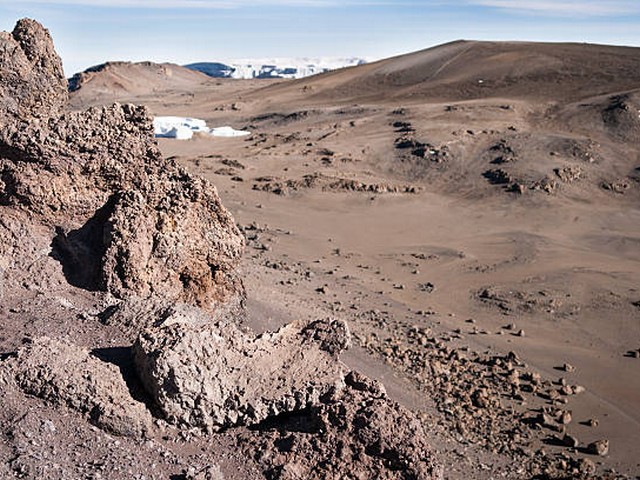Conquering the Heights: Kilimanjaro Trekking For Seniors
A Journey of Resilience and Beauty Awaits
Imagine standing on the roof of Africa, where the skies bow in respect, and the clouds are within an arm’s reach. For many seniors, trekking Mount Kilimanjaro represents not just a physical challenge but a poignant moment of fulfillment. Here at Kilimanjaro Centre for Trekking and Ecotourism (KCTE), we believe that age is just a number, and adventure is timeless. In this blog, we’ll explore how seniors can safely and enjoyably undertake this majestic journey, proving that the golden years can indeed be golden.
Why Kilimanjaro is Ideal for Senior Trekkers
Accessibility and Varied Routes
Mount Kilimanjaro is unique due to its accessibility and various routes that cater to different fitness levels and preferences. From the more gradual Marangu Route, which offers hut accommodations, to the scenic Machame Route with its stunning vistas, there is a path that suits everyone. For seniors, especially, these choices allow a tailored trekking experience that balances challenge with comfort.
Perfect Pace and Acclimatization
Kilimanjaro’s routes are designed to allow climbers to "walk high, sleep low," aiding in better acclimatization. This is crucial for senior trekkers, as taking it slow and steady helps the body adjust to altitude, reducing the risk of altitude sickness. Our guides at KCTE are experts in pacing and can customize the walk based on the group’s needs, ensuring a safe and enjoyable ascent.
Preparing for Your Kilimanjaro Adventure
Health Checks and Fitness
Before embarking on your Kilimanjaro trek, a thorough health check is imperative. Consult with your doctor about your plans and undergo necessary assessments to ensure you are fit for the climb. Additionally, engaging in regular exercise, like walking or light hiking, months before your trip can significantly enhance your stamina and overall fitness.
Gear and Equipment
Packing the right gear is crucial for a comfortable climb. Essentials include sturdy hiking boots, thermal layers, a waterproof jacket, and a walking stick, which is particularly helpful for maintaining balance and reducing joint strain. KCTE offers rental options for high-quality gear, so you don’t have to worry about bringing everything from home.
On the Mountain: Safety, Comfort, and Enjoyment
Expert Guides and Support
With KCTE, you are in safe hands. Our guides are specially trained to assist senior trekkers, equipped with first aid training and emergency response skills. They are also attuned to the unique needs of older climbers, providing support and encouragement all the way to the summit.
Nutrition and Hydration
Maintaining proper nutrition and staying hydrated is vital, especially at altitude. Our trek packages include fresh, nutritious meals and ample water supply to keep you energized and hydrated throughout your journey. Special dietary needs can also be accommodated, ensuring you receive the right balance of nutrients.
Enjoying the Scenic Vistas and Wildlife
Kilimanjaro is not just about reaching the summit; it’s about enjoying every step of the journey. The routes offer a chance to witness diverse ecosystems, from lush rainforests to alpine deserts. Keep your eyes peeled for unique wildlife like colobus monkeys and various bird species. These moments of natural beauty are sure to enhance your trekking experience.
Testimonials from Senior Climbers
Don’t just take our word for it; hear from those who have lived the adventure. Many of our senior clients have found a renewed sense of vitality and accomplishment from their Kilimanjaro trek. Their stories of endurance and joy are a testament to the spirit of adventure that knows no age.
FAQs: Everything You Need to Know About Kilimanjaro Trekking for Seniors
Q1: What is the best time of year for seniors to climb Kilimanjaro?
A1: The best times are during the dry seasons, from January to mid-March and from June to October, when the weather is most favorable.
Q2: Are there medical facilities on the mountain?
A2: While there are no formal medical facilities on Kilimanjaro, our guides carry emergency medical supplies and are trained in first aid. Major routes are patrolled by park rangers, and evacuation procedures are in place for emergencies.
Q3: How long does it take to climb Kilimanjaro?
A3: It typically takes about 5 to 9 days, depending on the route and pace. We recommend routes that offer longer durations for better acclimatization, especially beneficial for seniors.
Q4: Can seniors really reach the summit?
A4: Absolutely! With proper preparation, a positive mindset, and expert guidance from KCTE, many seniors successfully conquer Kilimanjaro.
Why Choose KCTE for Your Kilimanjaro Trek?
At Kilimanjaro Centre for Trekking and Ecotourism, we specialize in creating memorable, safe, and exhilarating adventures tailored to the needs of senior trekkers. Our commitment to eco-friendly practices ensures that your journey is not only personal but also preserves the beauty of Kilimanjaro for future generations.
Ready to Embrace the Adventure?
Climbing Kilimanjaro is an inspiring feat that many dream about. If you’re a senior thinking about this once-in-a-lifetime adventure, let KCTE help you make it a reality. Contact us today to start planning your Kilimanjaro trek, where we promise to guide you, inspire you, and celebrate with you at every step. Remember, it’s never too late to reach for the summit and beyond!




